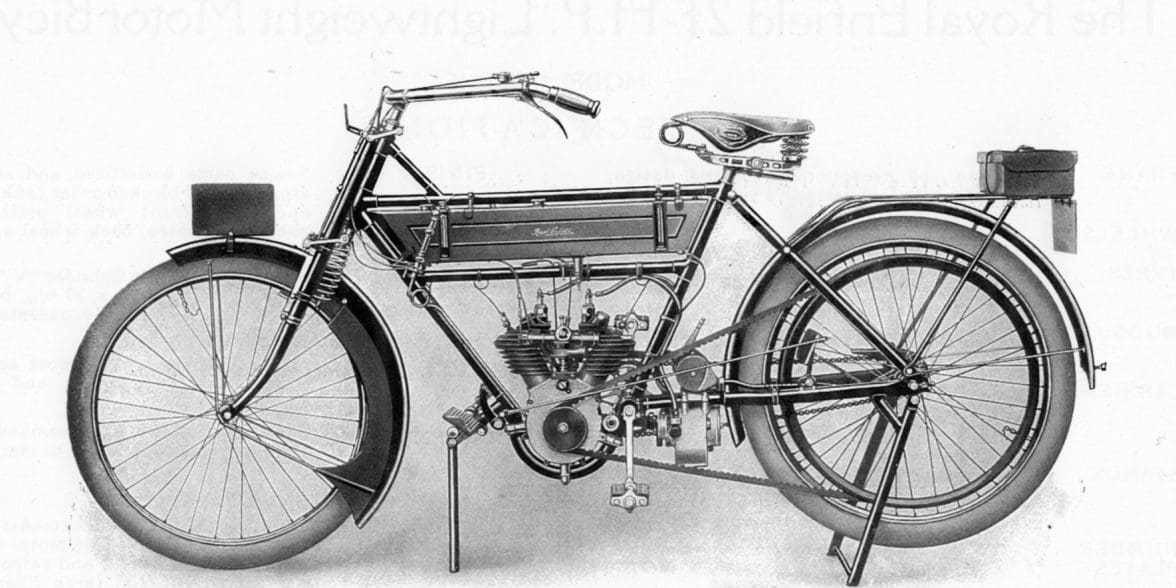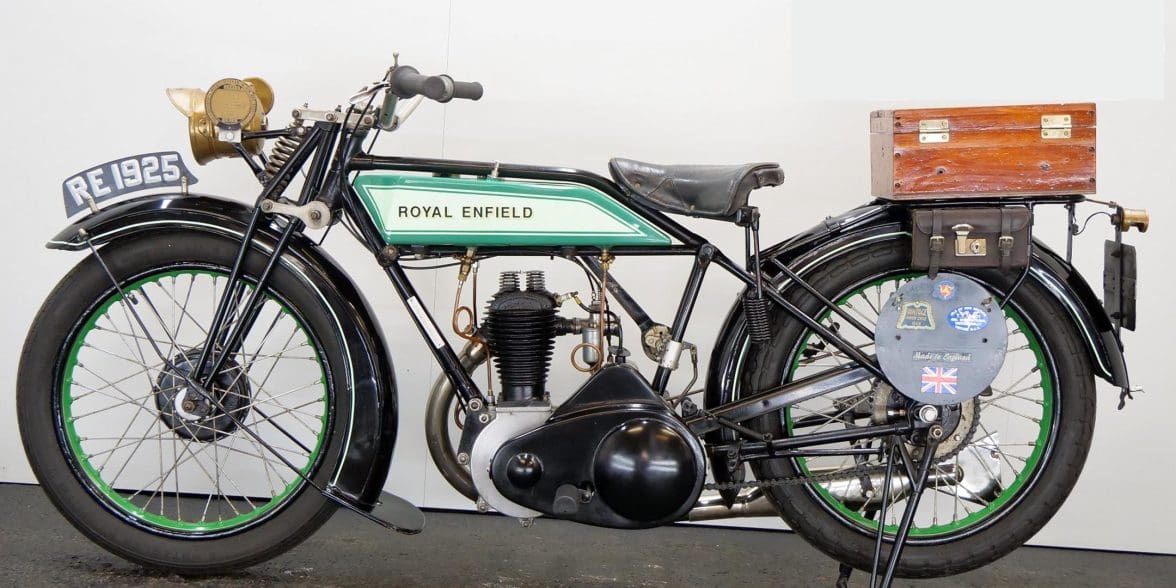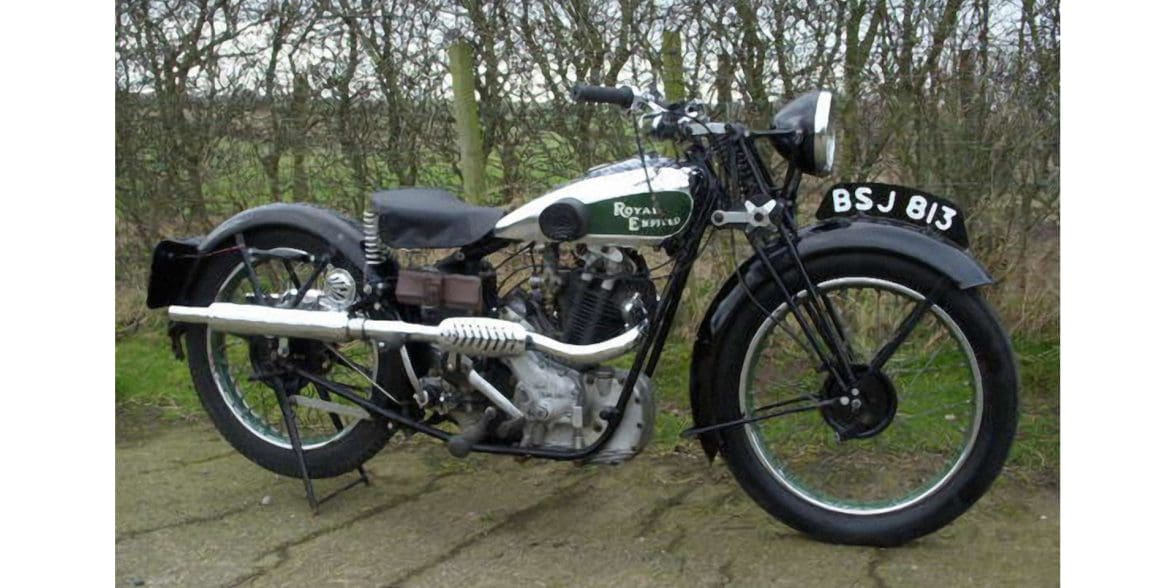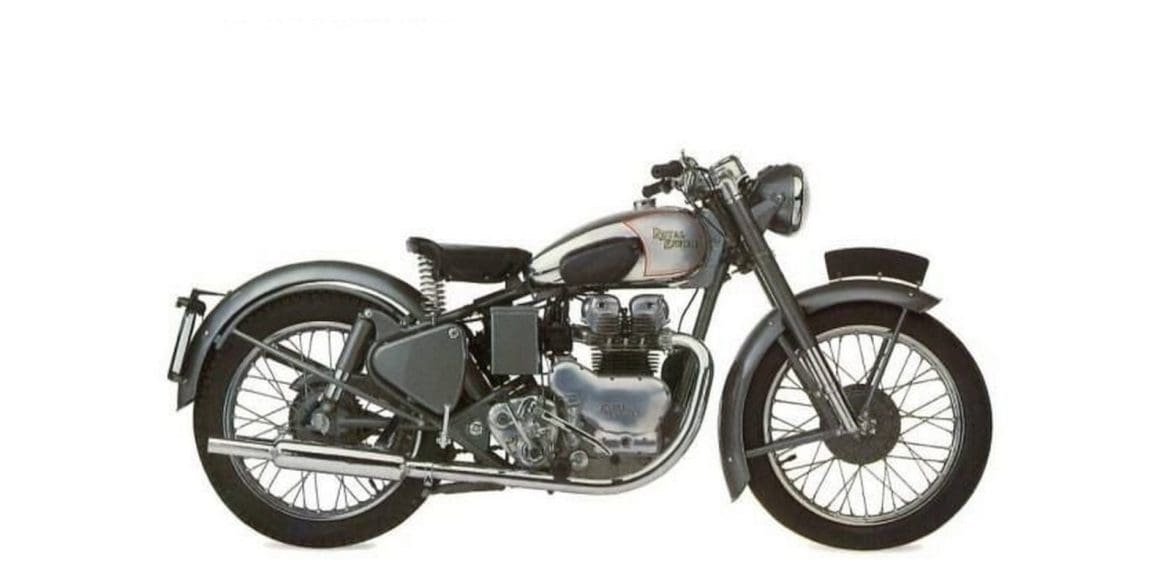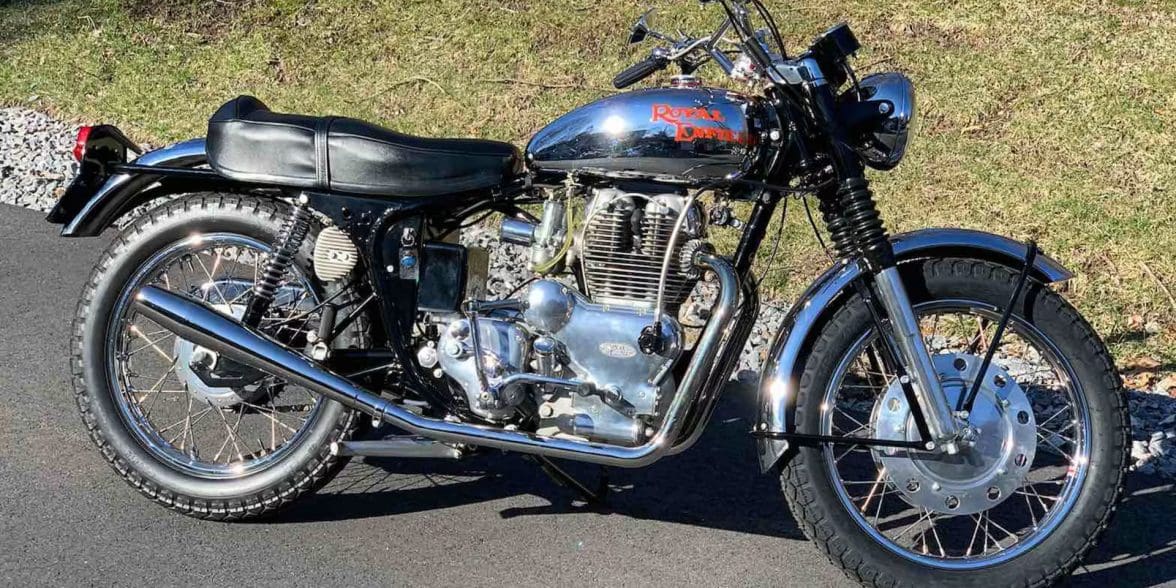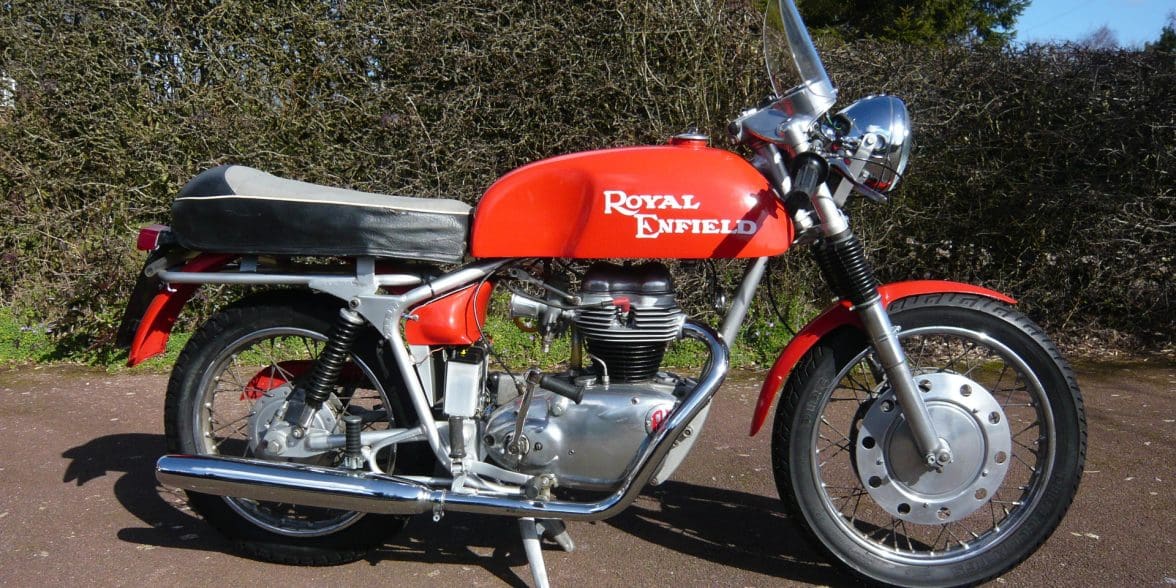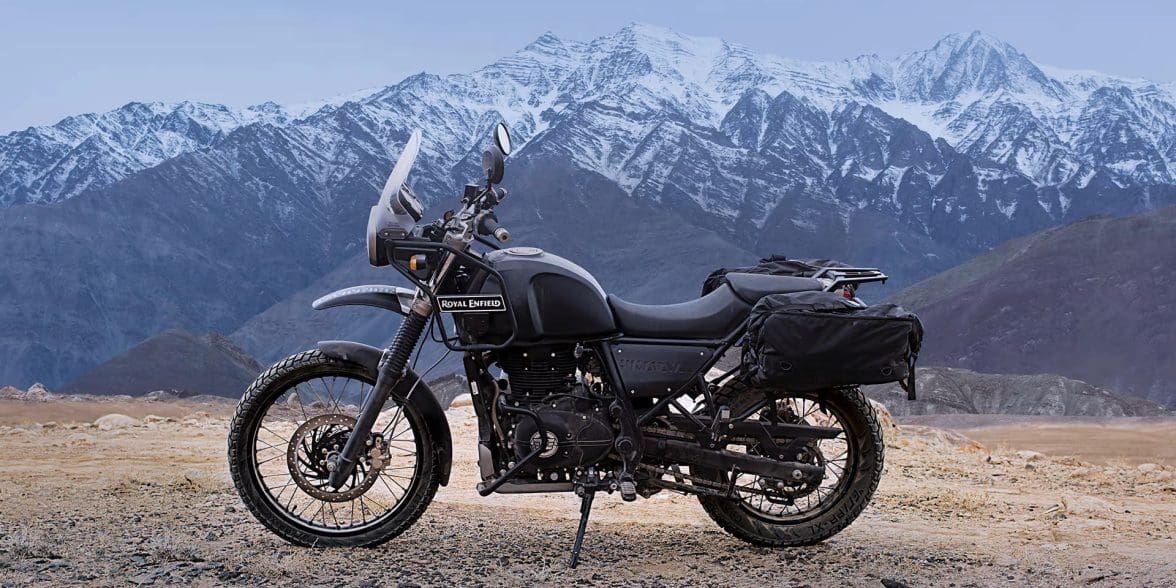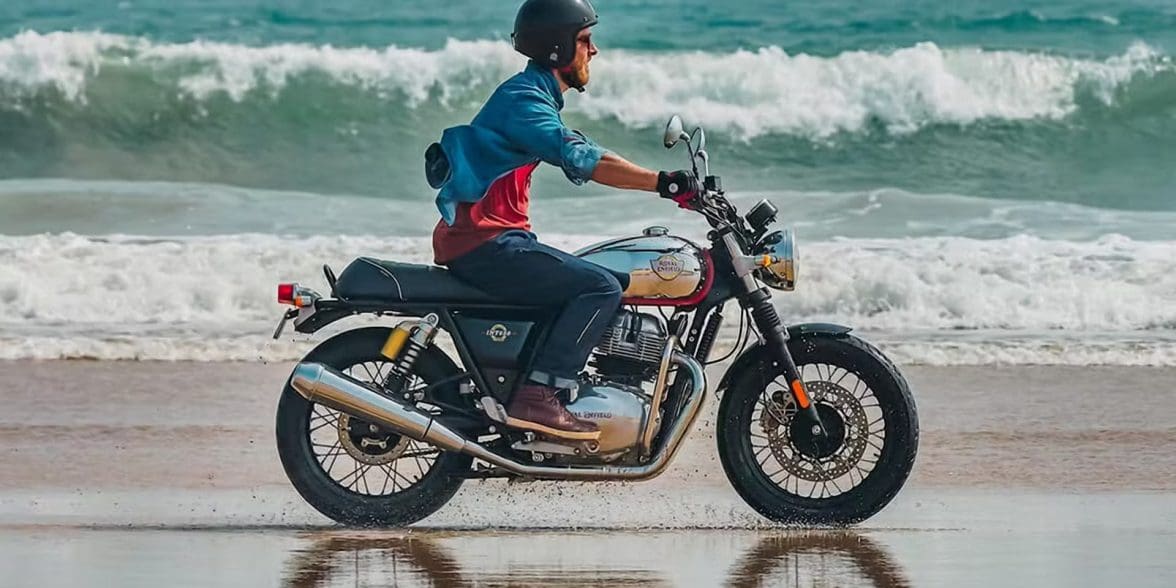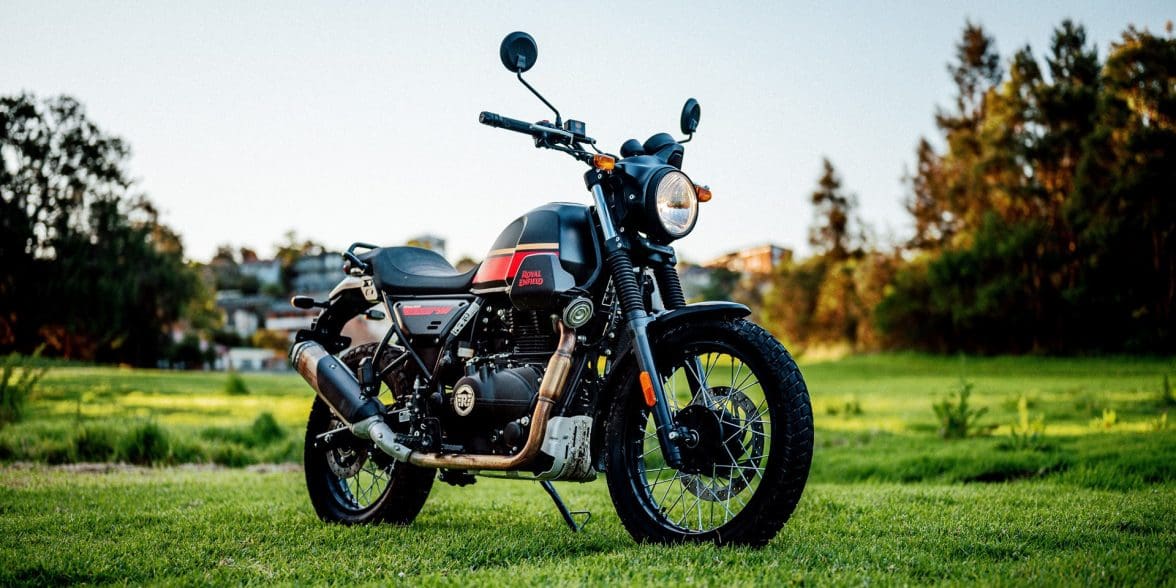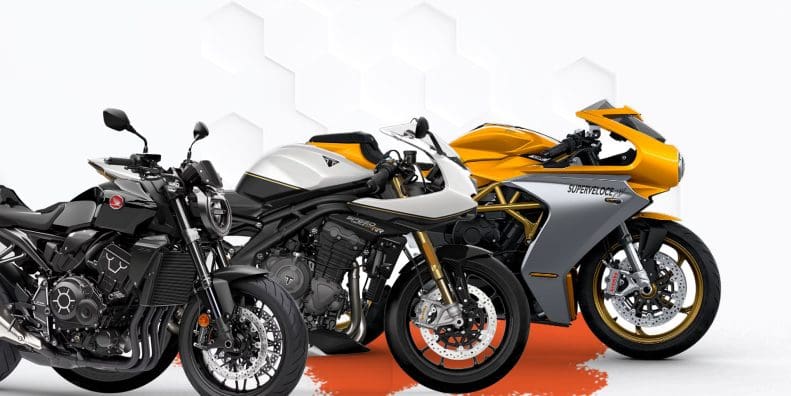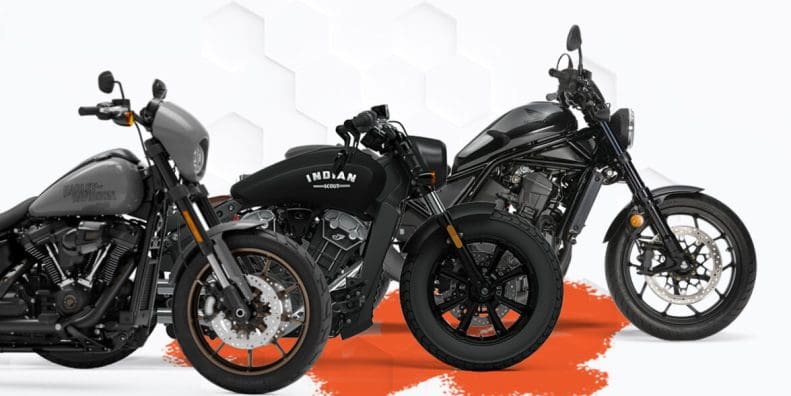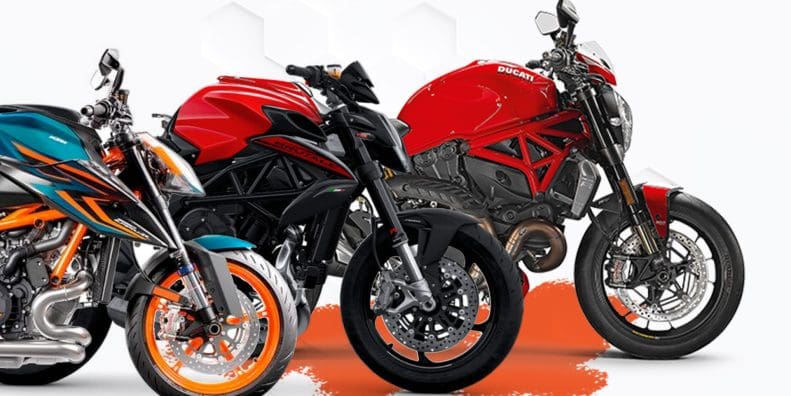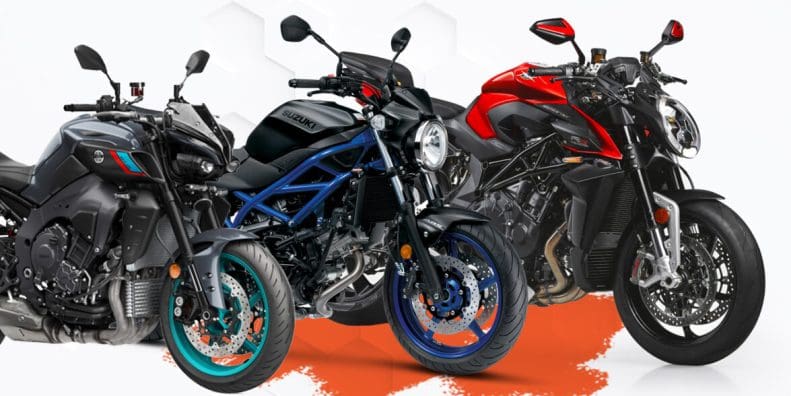The Best Royal Enfield Motorcycles Ever Made
[2024 Edition]
Updated September 20, 2023 by Simon Bertram
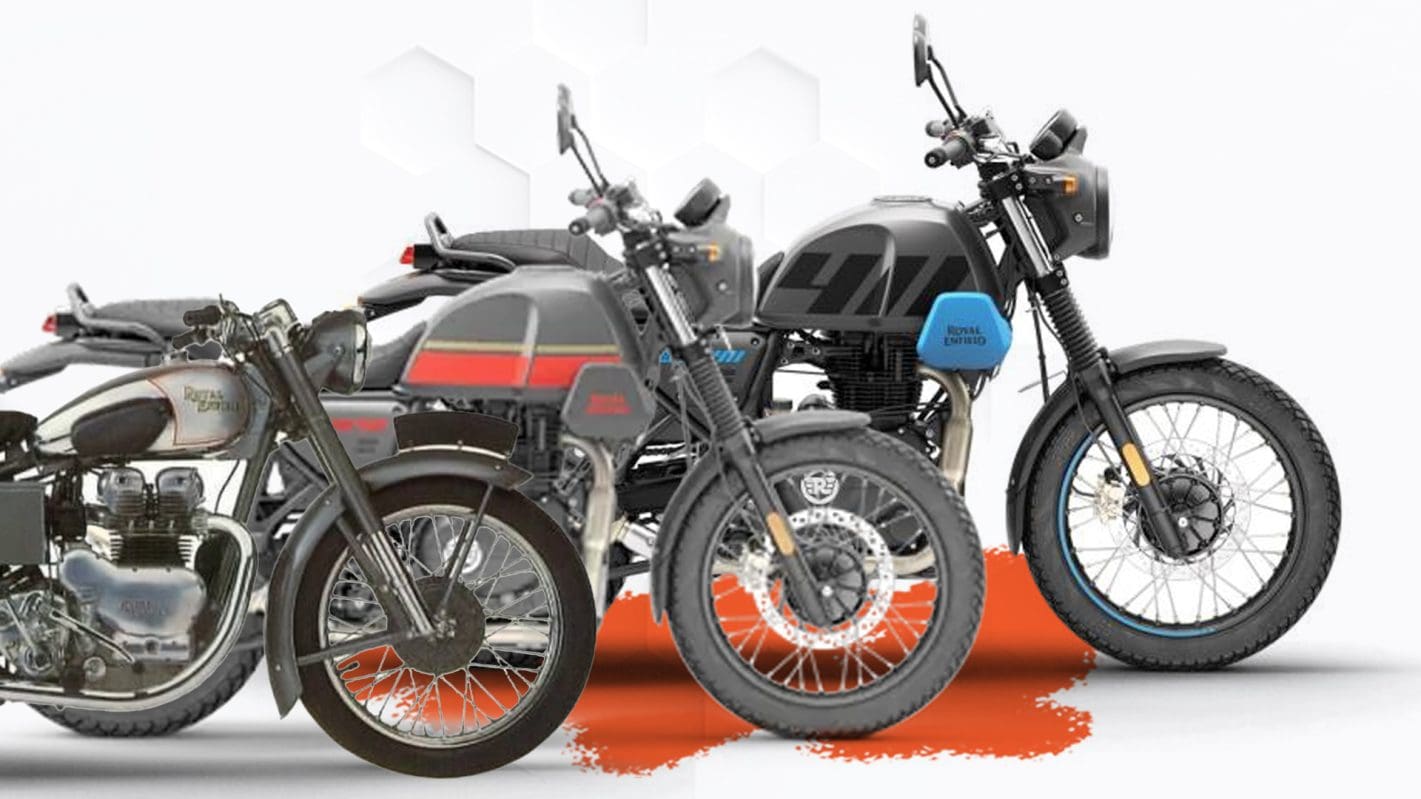
Two Companies, One Name, An Amazing Legacy
Article Quick Nav
These are the best Royal Enfield motorcycles ever made:
It may surprise many to know that Royal Enfield was not the original name that the fable manufacturer operated under, as it was only a brand name. The full name was The Enfield Cycle Company Limited, from Redditch, Worcestershire, England. They sold bicycles and motorcycles, of course, but also lawnmowers and stationary engines. Many of the non-vehicular products they made were simply branded "Enfield".
Their first venture into vehicles was the Quadricycle, a four wheeled motorcycle powered by a De Dion steam engine. It didn't sell well, so in 1901 they produced a bicycle with a 239cc Minerva single cylinder engine on the downtube, and didn't look back from there. Early on in the 20th century, they were subcontracted by the Royal Smalls Arms Factory in Enfield, which is both where they acquired the Royal part of Royal Enfield, as well as came up with their slogan of "Built like a gun."
They famously produced the Royal Enfield Bullet, the longest-lived continuous production motorcycle in history, although after World War II, they started to run into financial troubles, as did many other motorcycle manufacturers. In 1967 they sold off their parts division to Velocette, and Norton Villiers took over as the main manufacturing arm, although by 1971, the Enfield Cycle Company went defunct.
However, by then they had established a factory and production arm of the Royal Enfield brand in India, as it was an emerging market, subcontracted to Madras Motors. The thing about it is, no one told the Indian operation that the main company shut down, so the sub-brand just kept on producing motorcycles. Once they learned of the Enfield Cycle Company's closure, they bought out the naming and licensing rights, and are the Royal Enfield that we all know today, keeping the legacy of the original company alive. Now they are widely known as the premier Indian motorcycle brand.
While a tumultuous history almost saw the brand fade into obscurity, it survived the collapse of the original company, and produces almost a million motorcycles per year nowadays. Since the mid-2010's, they've also turned around their reputation of being "cheap-n-cheerful" into being seriously good neo-retro motorcycles. These then, in our highly subjective opinion, are some of the best and most important Royal Enfield motorcycles (from either company to use the name) ever made.
Of note, prices will be listed in Pounds Sterling (£) up until the original Enfield went defunct, as Royal Enfield models did not sell particularly well in North America and finding accurate pricing data is very difficult.
About Our Selections
These selections were made on the criteria that they were manufactured or produced by either company to bear the Royal Enfield brand name, be it The Enfield Cycle Company or Madras Motors. This includes the periods when Enfield Cycle Company was in receivership before going defunct, under Norton Villiers control.
1909 Royal Enfield V-Twin
The motorcycle that earned Enfield a major contract from the British Government for World War One
Why We Picked It:
In the first decade of the 20th century, many brands, American and European, were building V-twin engines and placing them in their own bikes, or selling them to other manufacturers to use in their own. The Swiss firm Motosacoche was one such manufacturer, with their engines being fitted into a Royal Enfield frame in 1909.
Originally 297cc from 1909 to 1911, these motorcycles turned out to be underpowered. In 1912, Royal Enfield switch to J.A. Prestwich (J.A.P.) 770cc V-twin engines for the V-Twin Model 180, which were crucially powerful enough to pull a sidecar along, as in the early days, motorcycles were seen as serious forms of transport, not just a hobby.
In 1913, Enfield started to make their own 425cc V-twin engine which was the best of the two previous V-twins combine, although they still offered the 770cc J.A.P. V-twin as well. It was the 770cc edition, with a mighty 6 HP, that the British War Department placed large orders for, with sidecars, during World War I. The interesting thing about these military models, and which makes them highly prized collectors items today, is that the sidecars often came with mounted machine guns!
Specifications:
Price: Unknown
Engine: 770cc two-stroke V-twin (297cc & 425cc models also made)
Power: 6 HP
Torque: Unknown
Transmission: 2 Speed Hand-Shift Manual
Curb Weight: ~130 lbs without sidecar
Strengths:
The first mass produced Royal Enfield, using several variations of a V-twin
Became an important motorcycle for WWI as it was powerful enough to use a sidecar with a heavy machine gun fitted
Sold decently well before WWI, but saw a spike in sales after due to the reliability seen during the conflict
Learn More:
1925 Royal Enfield Standard 350
An example of simplicity and reliability that earned Enfield a reputation of making dependable bikes
Why We Picked It:
Much like today, for those looking to buy a motorcycle in 1925, reliability and ease of repair was a factor. It was with this in mind that Royal Enfield made the Standard. While naming a bike like that these days would seem a bit odd, at the time it was perfectly acceptable, as it implied that it was a standardized bike with good parts and easy operation.
Both of those implications were correct. Originally meant to have a J.A.P. 350cc sidevalve single as its powerplant, Royal Enfield made their own version of it that produced 2.75 HP, connected to a Sturmy Archer 3-speed transmission.
Let's be realistic here, this motorcycle was not going to set any speed records, nor was it going to even be close to the best of the best on the road. It is one of Royal Enfield's most important motorcycles ever because, quite literally, everything on it was standardized. It could be fixed with a hammer, and if that didn't work, because the parts were abundant, they were relatively inexpensive to purchase and replace on the motorcycle.
Even more importantly, the thing about the Standard was that it didn't break down often, as it was dead simple. Frame, engine, wheels, and a gas tank and that was it. It is around this time that the slogan of "Built like a gun" started to really catch on, as it was as reliable as one, which shot Enfield way up the ladder in esteem and reputation.
Specifications:
Price: £47 in 1925 ($4,495 in 2023)
Engine: 350cc four stroke single
Power: 2.75 HP
Torque: Unknown
Transmission: 3 Speed Hand-Shift Manual
Curb Weight: ~160 lbs
Strengths:
The "Built like a gun" slogan that had been around for years started to really catch on with the Standard 350
At £47 in 1925, it would take you about a year to save up to buy a Standard 350, as the average monthly wage was between £2 to £6, depending on what you did for work.
Standardized all the parts on the motorcycle so that spares were readily available, but also made them bone-dead-simple to repair, and were as reliable as a wood burning stove
Learn More:
1932 Royal Enfield Bullet 350
The longest continuous production motorcycle model in history
Why We Picked It:
There are two records about the Royal Enfield Bullet that are of importance. The first is that the model name has been in continuous production since 1932, while the second is that the 1948 to present Bullet 350 is the longest uninterrupted production of an unchanged model, although the carburetor version was only sold in India after the turn of the millennium, with a fuel injected version going to the rest of the world.
The 1932 to 1947 Bullet 350, however, is the one that started it all, with an inclined 346cc four-stroke single producing somewhere in the range of 15 HP. It was designed for the "exacting requirements of the sporting rider" and had a hard rear end, sprung seat, and center-spring front girder forks.
The engine was also a work of art for the time, using dry sump lubrication and push rod activated valves via a single overhead cam. According to one reporter at the time, although he was riding the bigger 500cc model, all of the engines ran "like oiled silk," and the 350cc model would happily cruise along at 70 MPH without issue, thanks to its innovative inclusion of a 4-speed right-foot shift transmission.
The only real changes that occurred in 1948 was that the engine was moved to be upright, the front suspension was now a sprung fork, and the rear gained a sprung swingarm. Otherwise, it was still the same bike.
Specifications:
Price: £46 in 1932 ($5,051 in 2023)
Engine: 350cc four stroke single
Power: ~15 HP
Torque: Unknown
Transmission: 4 Speed Right-Foot-Shift Manual
Curb Weight: 350 lbs
Strengths:
One of the most successful sport models of any motorcycle in history, it literally kept Royal Enfield afloat for almost four decades after its introduction
Had three variations: 250cc, 350cc, and 500cc. The 250cc was the affordable entry level, the 350cc was the "standard" model, and the 500cc was for the speed demons and the racers that wanted a Royal Enfield motorcycle
Longest uninterrupted production model name in motorcycle history, and longest unchanged model since 1948 (allowing for modernizations such as fuel injection and engine control electronics)
Learn More:
1949 Royal Enfield 500 Twin (Meteor)
Enfield took an idea from Triumph and improved upon it, the first parallel twin in an Royal Enfield motorcycle
Why We Picked It:
After the Second World War, Royal Enfield had not introduced a majorly new model in quite some time, and while they weren't stagnant, all the big hitters around them such as Triumph, Norton, BSA, and the like were pumping out new models it seemed like almost every week. They needed to catch up and release a new model to stake their claim, and they did it by taking an idea from Triumph that had debuted in 1938.
That idea was the parallel twin engine, with a displacement of 496cc released in 1949 and alternately called the 500 Twin or the Vertical Twin 500, depending on where you bought the bike. It borrowed a lot of parts from the Bullet 500, including its sprung swingarm and telescoping front forks, to the point that it was often mistakenly called a Bullet or Bullet Twin even in official media.
It was a very popular model, so much so that by the mid-1950s, it started to gain the name Meteor, as in 1953, Royal Enfield released the Meteor 700 as a bigger version of the bike. Noticing a great marketing opportunity, Royal Enfield released a reworked version of the Vertical Twin 500 in 1958 called the Meteor Minor, and changed the name of the 700cc model to the Super Meteor.
The importance of this motorcycle is that it both laid the groundwork for one of Royal Enfield's most important motorcycles of all time, as well as established the Meteor name as the one applied to parallel twin 500cc engine sport models.
Specifications:
Price: £155 ($8,615 in 2023)
Engine: 494cc parallel-twin
Power: ~20 HP
Torque: Unknown
Transmission: 4 Speed Manual
Curb Weight: ~400 lbs
Strengths:
The first parallel twin model from Royal Enfield
Alternatively called the 500 Twin or the Vertical Twin 500
Was unofficially gaining the nickname Meteor 500 in the mid-1950s as a smaller version of the 1953 Meteor 700, so Royal Enfield made it official in 1958 with the Meteor Minor 500cc parallel twin and the Super Meteor 700cc parallel twin
While not as popular or as fast as parallel twins from other manufacturers, it still moved a lot of models as it was priced well for the features and speed it gave.
Was Royal Enfield's first official "100+ MPH" bike, although a Bullet 500 could reach 100 MPH pre-war
Learn More:
1962 Royal Enfield Interceptor 750 (Series 1)
The definitive sport standard motorcycle from Enfield
Why We Picked It:
The 1961 Royal Enfield Interceptor can arguably be called the most important model to emerge from the company in its history. For the first time, it was a model that was made specifically for the North American market, released in1960 as a 61 model. It had a 51 HP, 692cc parallel twin engine lifted from the British sport model Constellation 700, but the frame and handling dynamics were tuned specifically the USA and Canada and our wider, longer, winding roads. Despite the intention of it making headway into the North American market, over two years a grand total of 170 units were built and shipped to customers.
Royal Enfield knew they had a good bike and needed to make sure it sold, so in 1962, they fitted a 736cc parallel twin to the bike, with beefed up casings and larger cooling fins on the cylinders to withstand the torque and dissipate heat better, respectively. Power was bumped up to 58 HP, and they were fitted with a 4-speed transmission. The bike was then named the Interceptor 750 Series 1.
These biggest improvement for the Series 1 engines was that they were very smooth, as the crankshaft for each was dynamically balanced from the factory. They also featured an auto-advance magneto to ensure optimal performance, and the seat was reworked to a more classically British bench seat. They sold well, including in North America, and were made until 1966.
Specifications:
Price: $1,168 in 1962 ($11,874 in 2023)
Engine: 736cc parallel twin
Power: 58 HP
Torque: Unknown
Transmission: 4 Speed Manual
Curb Weight: 432 lbs
Strengths:
Originally designed to be a breakout model for the North American market in 1960, it didn't sell well, so Royal Enfield gave it a bigger engine, more advanced tech for the engine, and put it on sale globally in 1962
Had the perfect combination of power, speed, and handling, and became the sport standard that Royal Enfield was known for, more so than the Bullet, Meteor, or Constellation (which was the "donor" bike for the original Interceptor)
The only thing that customers and reviewers remarked was that the brakes needed some more work, as they would stop you... eventually. Other than that, it can safely be said the Interceptor is the bike that made Royal Enfield a viable option in many countries around the world.
Learn More:
1965 Royal Enfield Continental GT
A cafe racer from the factory that earned instant admiration
Why We Picked It:
For the most part, a lot of attention was focused in the 1960s on parallel twin engines, but in 1965, Royal Enfield showed that they had not forgotten how to make a single cylinder model go pretty bloody fast and handle amazingly. The model that demonstrated that was the original Continental GT 250.
At the time, the rock and roll revolution was in full swing in the UK, and cafe racers had been around for almost a decade, but they were showing no signs of slowing down in popularity. As such, Royal Enfield produced an ultra-lightweight motorcycle with clip-on handlebars from the factory, a tiny windscreen that was just enough to deflect air over a rider that was hugging the tank, and powered it with a 250cc four stroke single pushing out 21 HP.
What makes the Continental GT 250 important in Royal Enfield's history is that it was the first model to carry a 5-speed transmission, with the 5th gear being a high speed sustain gear for maintaining a cruise over 70 MPH straight from the factory, something that gave it serious credibility among sport riders. The claimed top speed was 85 MPH
As the bike had barely any weight to it, it was very eager to lean into corners and accelerate out of them, so it became an almost instant hit with the Irish Road Racing scene and was run at the Isle of Man TT in its first year of release in the junior 250cc classes.
Specifications:
Price: £260 in 1965 ($8,220 in 2023)
Engine: 250cc four stroke single
Power: 21 HP
Torque: Unknown
Transmission: 5 Speed Manual
Curb Weight: 298 lbs
Strengths:
"Britain's Fastest 250" was not just marketing, it was the truth as no other manufacturer had a 250 bike that could hit anything over 70 MPH
One of the first bikes to use clip-ons as the handlebar style, mounted below the fork triangle at the top of the front suspension, so you were very low over the tank
Even with a full tank of gas, tickled at 300 lbs, making it ultra-lightweight and very flickable.
To demonstrate just how fast and agile it was, motorcycle road racer John Cooper did 8 laps of the Silverstone full grand prix course at race speeds, surprising many by absolutely howling down the straights faster than any bike had done so on the course before
Learn More:
2016 Royal Enfield Himalayan
A small-displacement ADV that has already earned the nickname "The Tiny Tractor."
Why We Picked It:
After Enfield Cycle Company ended in 1971, Madras Motors kept on making the same models all the way through to the new millennium, with very few, if any, changes. Then, in the 2010s, under new ownership and with a new British HQ, the decision was made to finally introduce new models that showed that Royal Enfield was not just a cheap Indian bike.
One of the first models to come out of that project, and one that has gained immense respect, is the 2018 Himalayan. As the first official ADV from the company, it had some pretty mighty expectations to fulfill... but Royal Enfield seemed to have misplaced that memo, and simply made a damned good little machine.
It is powered by a 411cc four stroke single that has an abnormally long stroke to give it a ton of low down torque. While it produces 24.5 HP, it also produces 24 lbs-ft of torque, which is why the bike has earned the nickname "The Tiny Tractor." Point it at an incline, give it a little gas, and it will make it up the hill. It might take 30 minutes where a KTM 890 Adventure would be up in 30 seconds, but it will conquer that hill.
It is also superbly designed, with a factory bash plate, easy to read dials, cargo carrying capacity that seems too much for its little frame but it can shoulder it no problem, and a rear ABS switch that does what it says on the label, something ADV riders truly appreciate. It is literally a little pack mule. It may not get there fast, but it will get there carrying way more than you ever thought it could.
Specifications:
Price: $5,449 (2023 model)
Engine: 411cc four stroke single
Power: 24.5 HP
Torque: 24 lbs-ft
Transmission: 5 Speed Manual
Curb Weight: 439 lbs
Strengths:
Royal Enfield's first and so far only ADV bike
"The Tiny Tractor" that won't set any Dakar Rally speed records, but will just keep on going no matter what terrain it faces, or how steep the hill is you need to go up
Can carry
Learn More:
2018 Royal Enfield Interceptor 650 (INT650 in USA)
A total reworking of the sport standard motorcycle, updated for the modern age without losing any of its charm
Why We Picked It:
While the original Interceptor from the 1960s was one of the best models that the original Enfield company made before going defunct, as part of the revival of the brand in the 2010s, a new Interceptor was always on the books. Because of the importance of getting it right, and making it the best bike it could be, Royal Enfield took their time to make sure that it ticked all the right boxes before they showed it to the world.
Powered by a 648cc parallel twin, which is air and oil cooled instead of liquid cooled, it produces 47 HP and 38.4 lbs-ft of torque. What makes this engine rather special is that it has a 270 degree crank, instead of the 180 degrees used in most parallel engines, giving it a significant amount of power in the midrange, where 90% of cruising and riding is done. It also gives the Interceptor 650 a raspy bark to its exhaust, almost like a V-twin, but as with almost all of the original parallel twins from the 60s, it's buttery smooth.
Despite not sounding like it has a lot of power in the modern world, it is a pretty rapid motorcycle. It won't outrun a supersport, not a chance, but it has just enough power and acceleration to get the grin going, and then you show it a corner and as it leans in happily with its exhaust barking away, that grin becomes a smile. That, honestly, is why this is one of the most important models of the "new" Royal Enfield, showing that they haven't lost touch with what made the original so special: It's just damned fun to ride.
Specifications:
Price: $6,149
Engine: 648cc parallel twin
Power: 47 HP
Torque: 38.4 lbs-ft
Transmission: 6 Speed Manual
Curb Weight: 445 lbs
Strengths:
The bike that showed that the "new" Royal Enfield is here to make a statement: The bikes are affordable, but they are not "Cheap" and they are seriously fun to ride
The first bike to be completely designed at the Royal Enfield Technology Center in Leicestershire, England, with hand-picked staff by Royal Enfield's CEO to build a small dream team of designers and engineers
Intentionally priced where many 400 and 500cc motorcycles live, giving riders the opportunity to ride a 650cc without breaking the bank. Also has more torque than many of those 400cc and 500cc models, making it an enticing choice as well.
Learn More:
2023 Royal Enfield Scram 411
One of the most interesting and fun new bikes from Royal Enfield in the modern era, a cross between a scrambler and a supermoto
Why We Picked It:
The Himalayan ADV bike is one of the best success stories of the last half decade, quite literally "the little bike that could." It has a very unique engine with an absolute boatload of torque due it extremely long stroke design, at 86mm against the bore of 78mm, which many were looking at and going "hmm, I bet that would make a great supermoto or scrambler engine."
Royal Enfield decided to tackle both in one go with the Scram 411. By name alone, it's a scrambler, with all the proper characteristics of one save one: Its exhaust is not raised, staying exactly where it is on the Himalayan. The ground clearance has been lowered as well, which isn't something that happens much with scramblers who generally increase ground clearance. It also gets firmer front suspension and a smaller 19 inch diameter front wheel, vs the 21 inch that the Himalayan uses, with a 17 inch rear wheel.
If that sounds like the recipe for a supermoto, you'd be right. The Scram 411, despite having the same 24.5 HP and 24 lbs-ft of torque as the Himalayan, rides in an entirely different dimension from its ADV cousin. It is perhaps the sportiest of all Royal Enfield models at the moment, and that's including considerations of the INT650 and the Continental GT650. It is insanely agile, like a supermoto, but can also get its tires dirty, like a scrambler. It's not the fastest or wildest out there, but it is a smile-a-mile motorcycle for those that want to have fun.
Specifications:
Price: $5,099
Engine: 411cc four stroke single
Power: 24.5 HP
Torque: 24 lbs-ft
Transmission: 5 Speed Manual
Curb Weight: 407 lbs
Strengths:
A lighter, more agile, and more street oriented cousin to the Himalayan
May not have the most power out there, but will still happily wag its tail out in a slide and is insanely flickable
Perhaps the sportiest of all the current Royal Enfield models, even more so than the sport standard INT650 and the cafe racers Continental GT 650
A smile-a-mile motorcycle in the same vein as a Honda GROM or a Yamaha MT-03: Just good, old-fashioned, honest fun on two wheels
Learn More:
Other Best Motorcycle Lists


